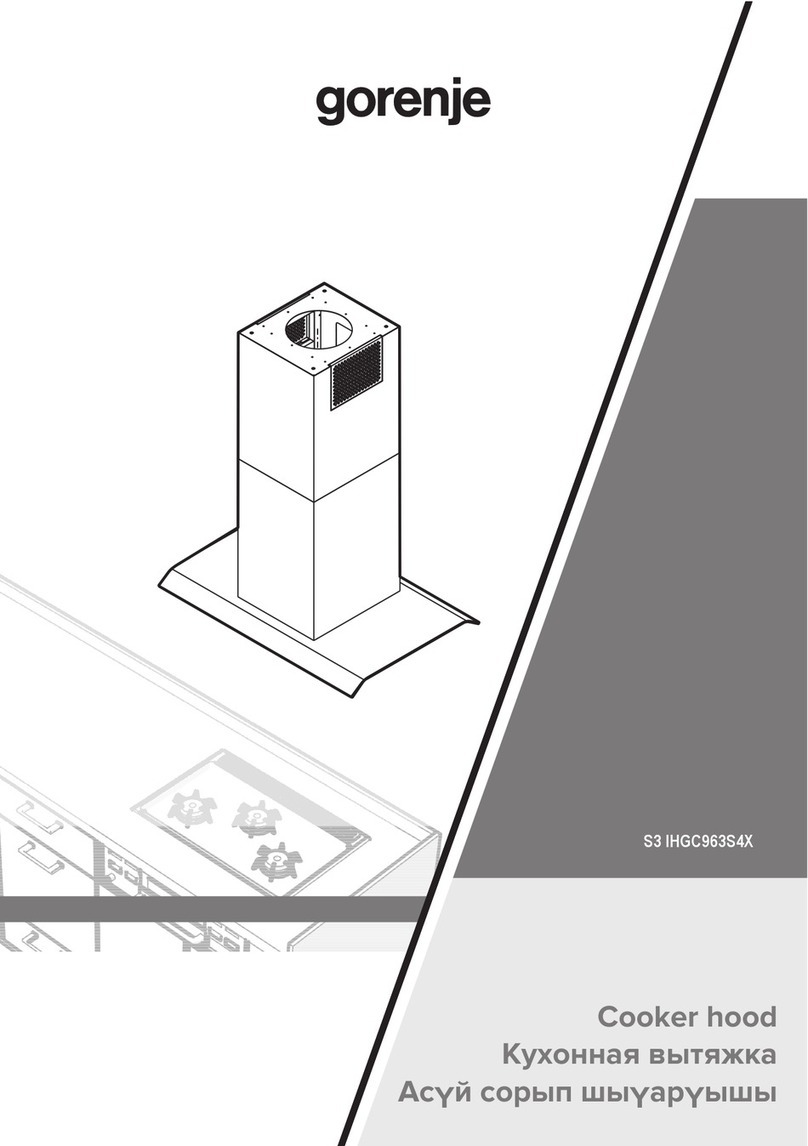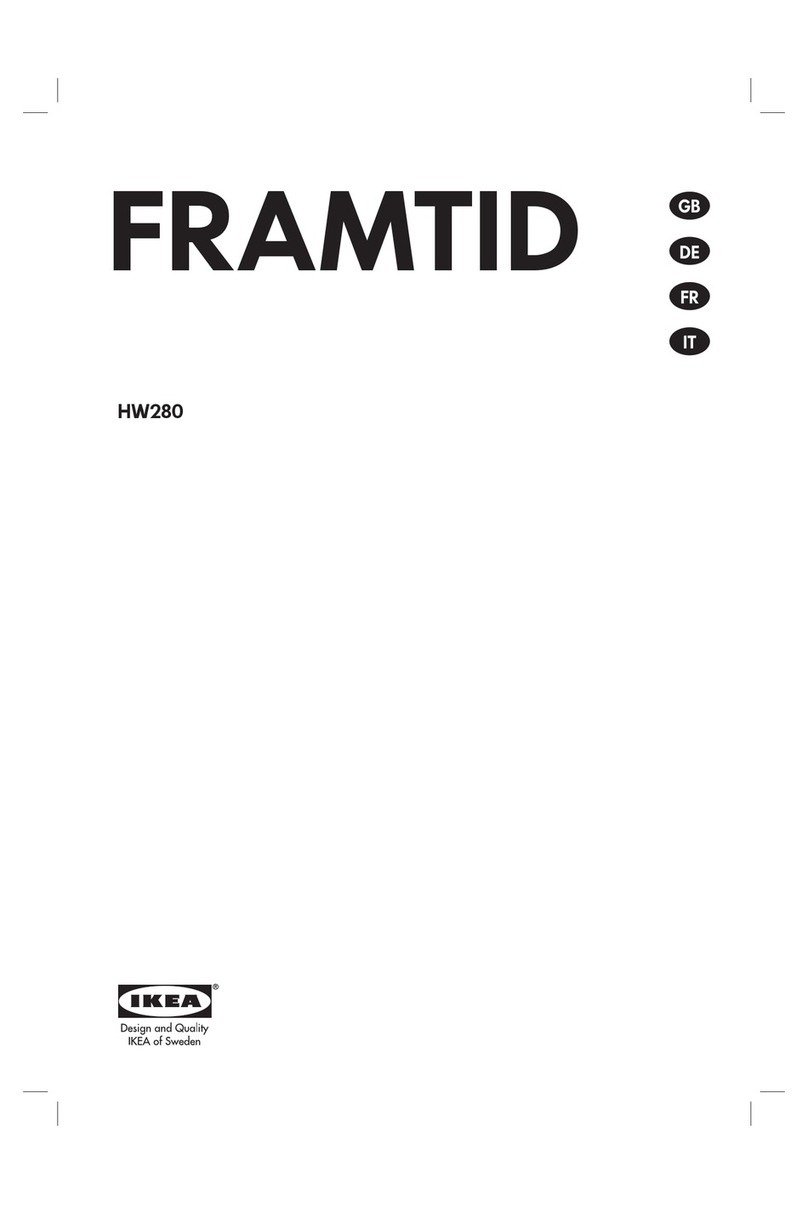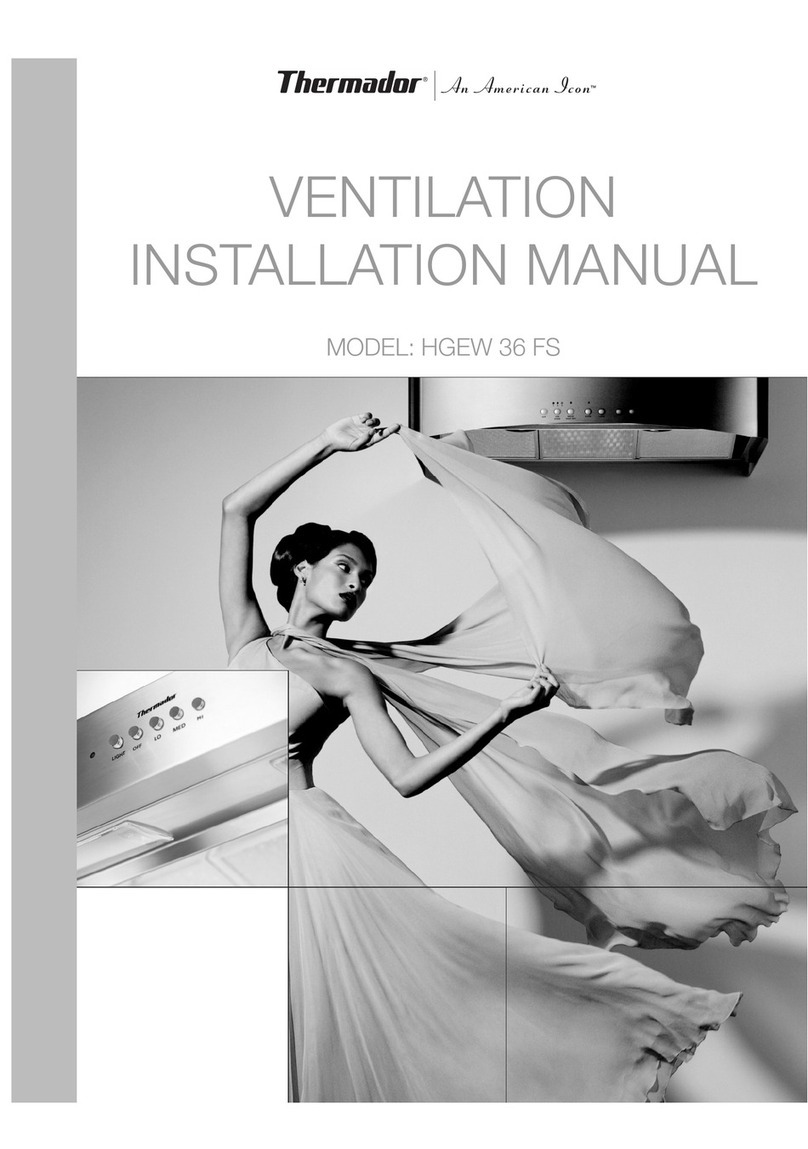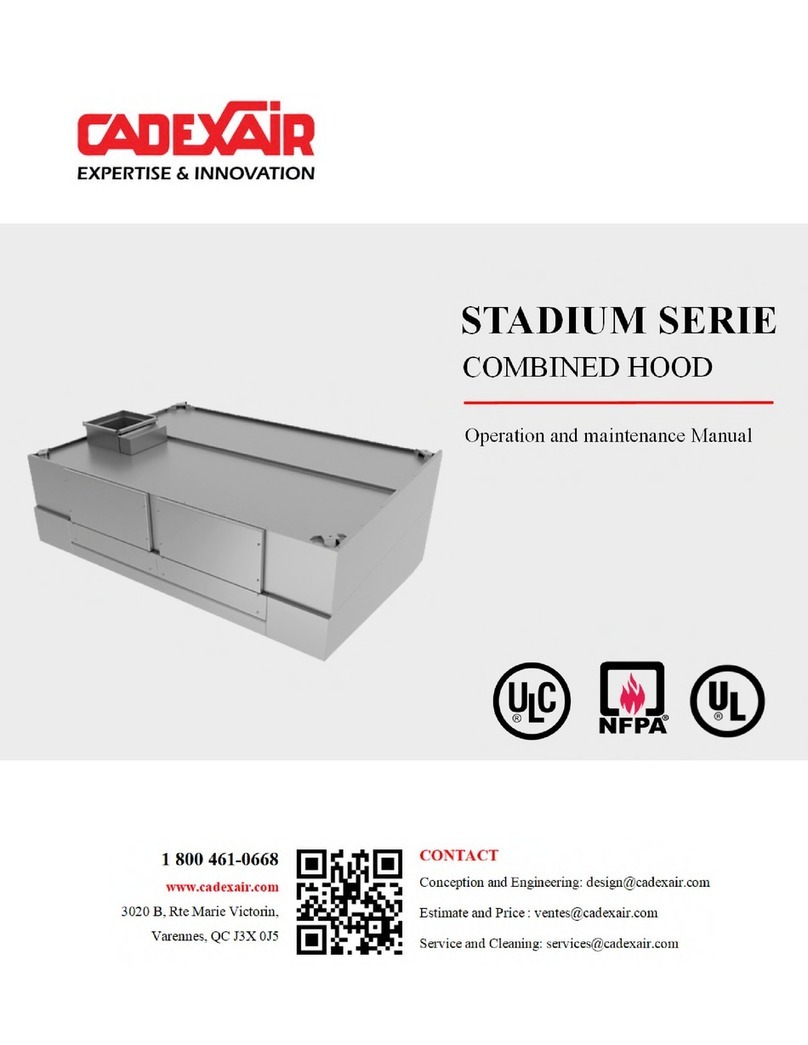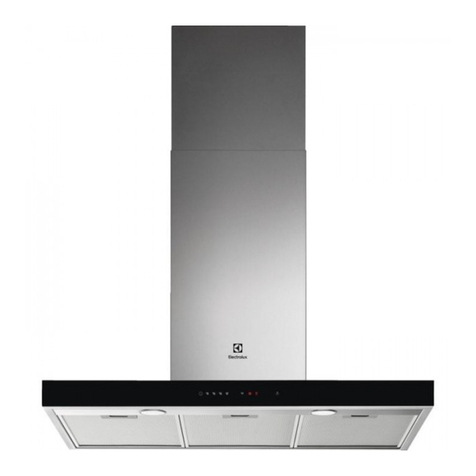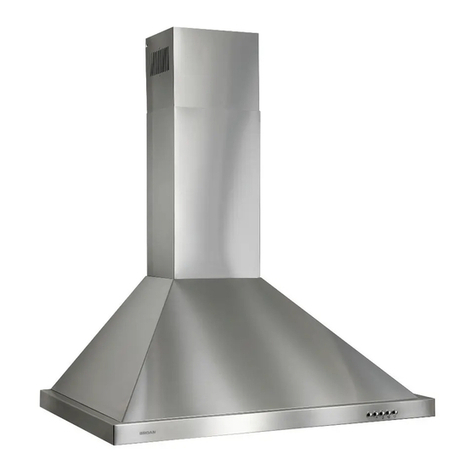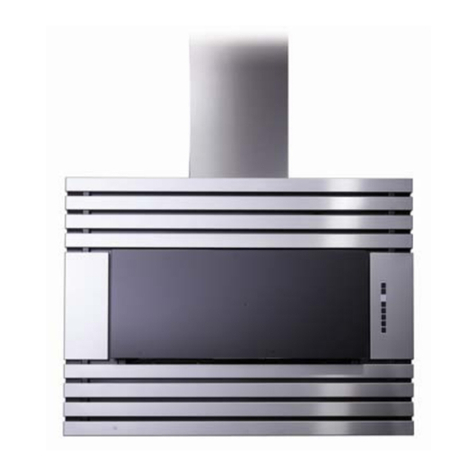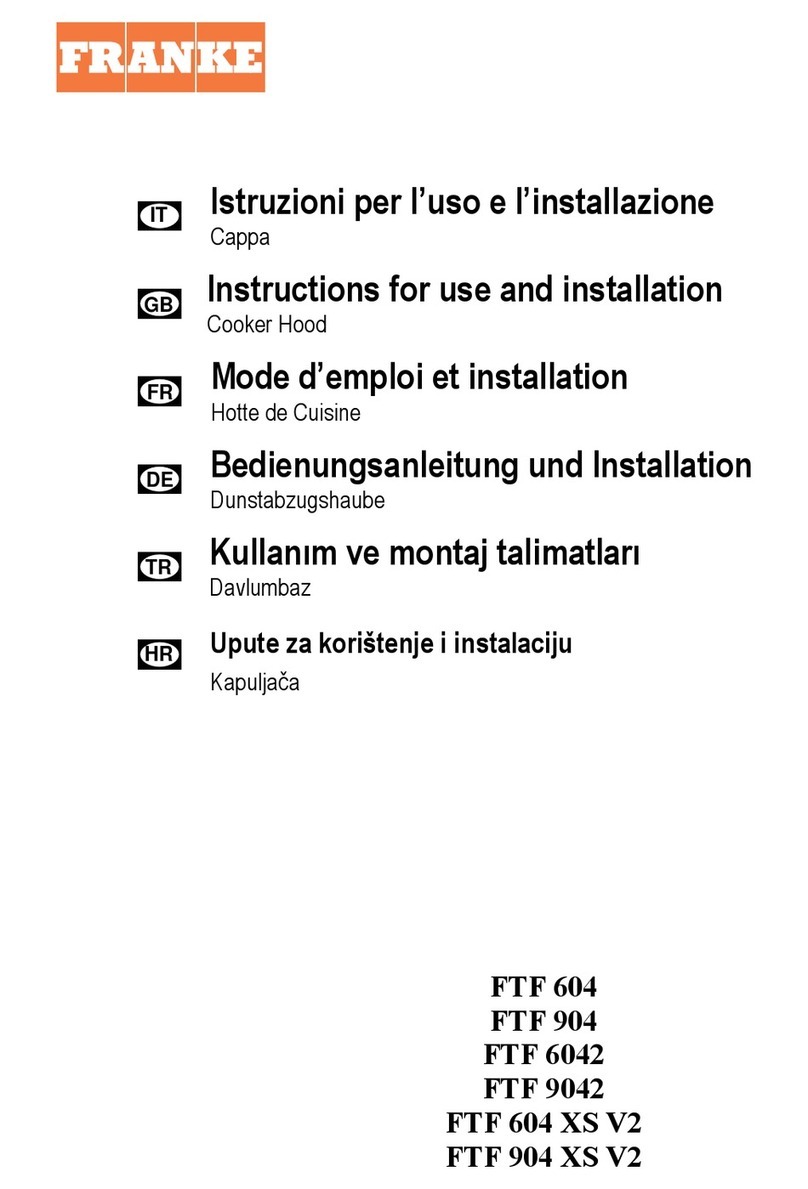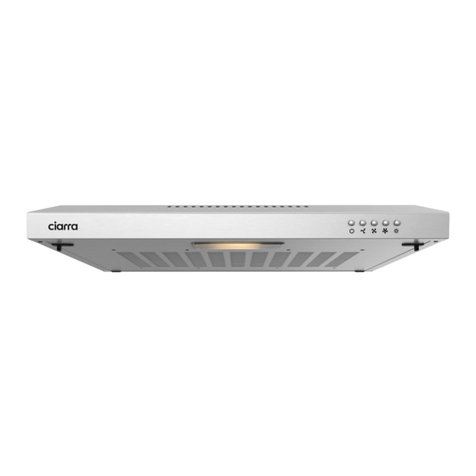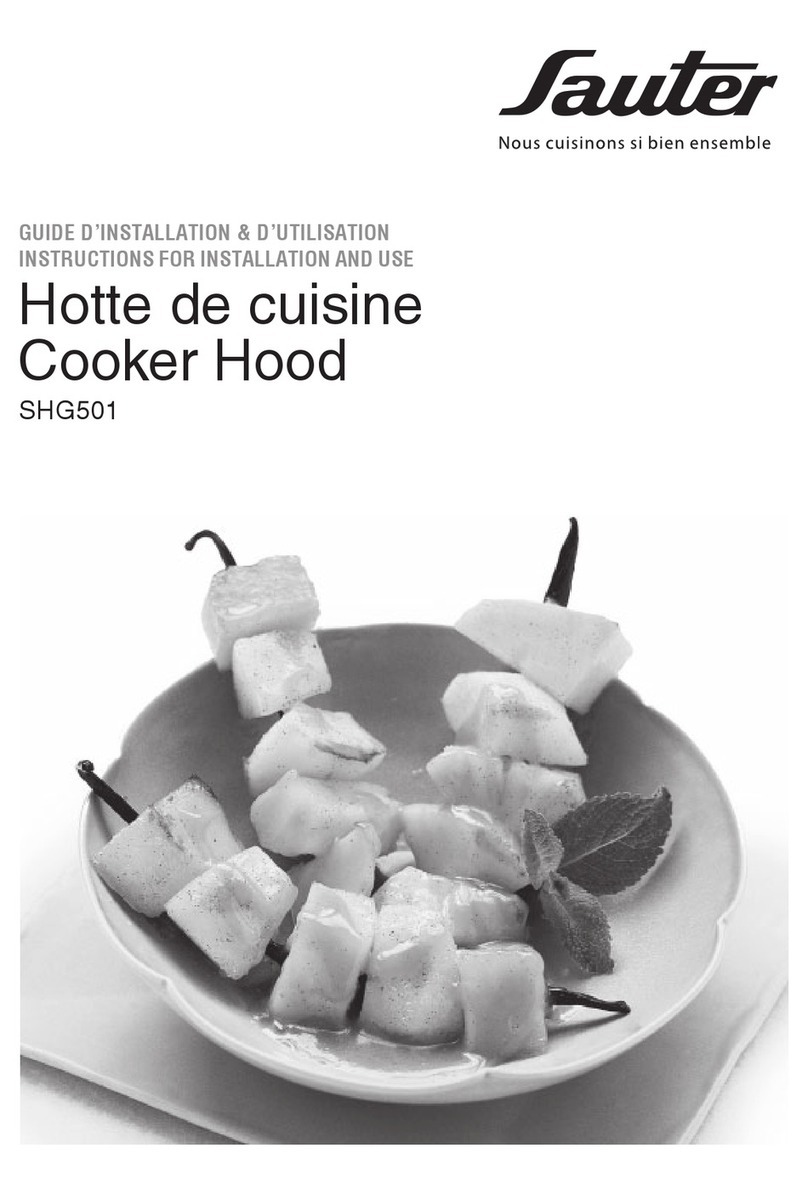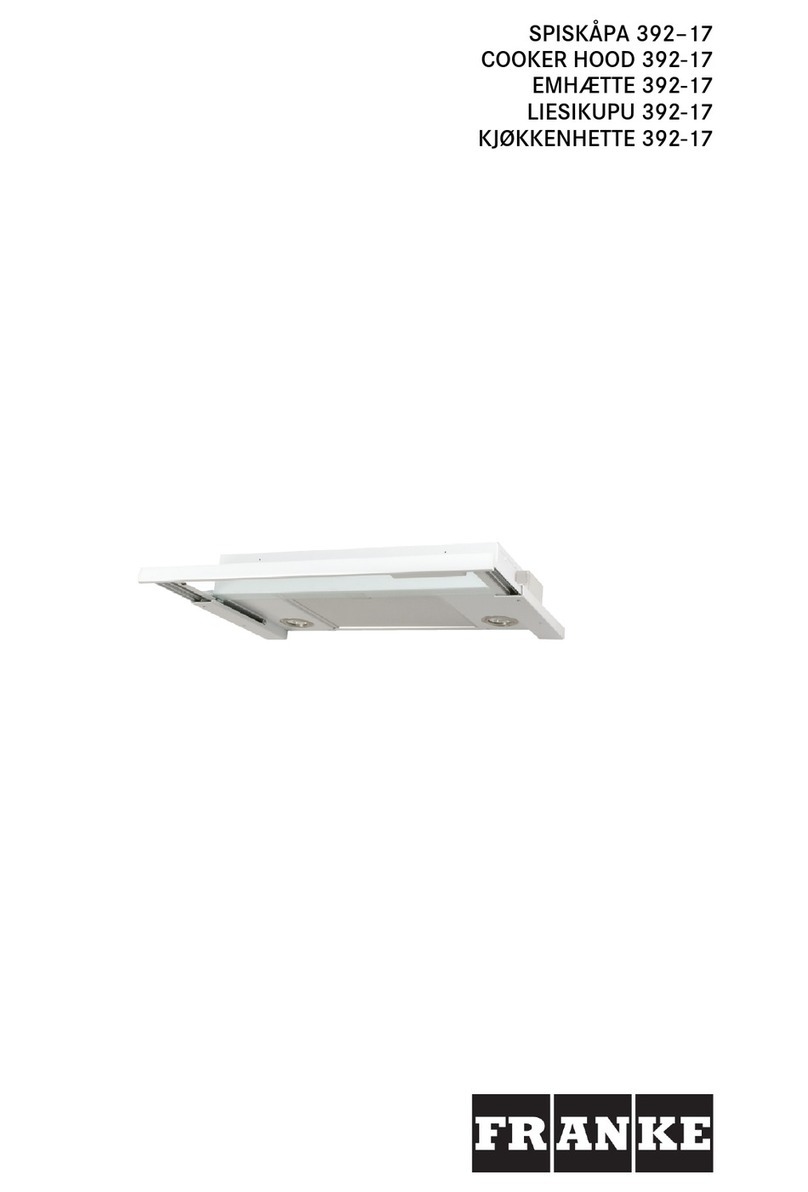The clogged filter must be replaced and the system reset to resume normal operation. If
this condition occurs during normally operating hours rotate the OVERRIDE selector
switch and the fan will come back on. The systems can run in the OVERRIDE position for
about 4 hours. (See the section the OVERRIDE switch) If the system runs longer than 4
hours the fan will shut down. The filters must be changed and the system reset. It is
recommended that the filters be changed prior to the filter clogged light energizing. A filter
usage chart is attached to record when the filters are being changed. Using this chart a
regular maintenance schedule can be set up to ensure constant uninterrupted operation
of the commercial kitchen.
Filter Removed:
Should the bag or box filters be removed during normal operation the Cadexair Stadium
unit is automatically shutdown. A pressure transducer measuring static pressure across
the bag filters and box filters monitors a minimum pressure drop of 0.05” W.C. When the
filter is removed the pressure differential falls and the pressure switch is activated. The
exhaust fan shuts off, the “FILTER REMOVED” pilot light on the control panel energizes
and the screen of the PLC in the control panel has a text message indicating “FILTER
REMOVED/LOW EXHAUST. To resume normal operation the filter must be replaced and
the system reset. (See the section the OVERRIDE switch)
High Temperature:
In the event of a high temperature in the ductwork leading to the Stadium unit a firestat
located at the inlet of the Stadium unit filter section is activated. When the exhaust air
reaches 160 F the firestat is energized. The exhaust fan shuts off, the “NORMAL” pilot
goes off, and a “FIRE” pilot energizes on the control panel. Should the exhaust
temperaturecontinue torise thefusible linkmelts and closes thefire damperin the exhaust
discharge of the Stadium unit filter section. This fire damper is always located between
the fan andfilter section. Thefire damper fusible link is rated at 165 F. Shut off all cooking
equipment and notify thefire department. To resume normal operation, replace the fusible
link and reset the system.
Override Switch:
In the event that the filter clogged annunciation shuts off the Stadium unit during a peak
cooking time rotate the OVERRIDE SWITCH located on the control panel clockwise. The
WARNING pilot light will energize and the FILTER CLOGGED and NORMAL lights will
turn off. This is a temporary override to allow for the cooking equipment to be shut off
prior to changing the filters. The systems can run in the OVERRIDE position for 4 hours.
If the system runs longer than 4 hours the fan will shut down. The filters must be changed
and the system reset. It is recommended that the filters be changed prior to the filter
clogged light energizing. A filter usage chart is attached to record when the filters are
being changed. Using this chart a regular maintenance schedule can be set up to ensure
constant uninterrupted operation of the commercial kitchen. Once the dirty filter has been
